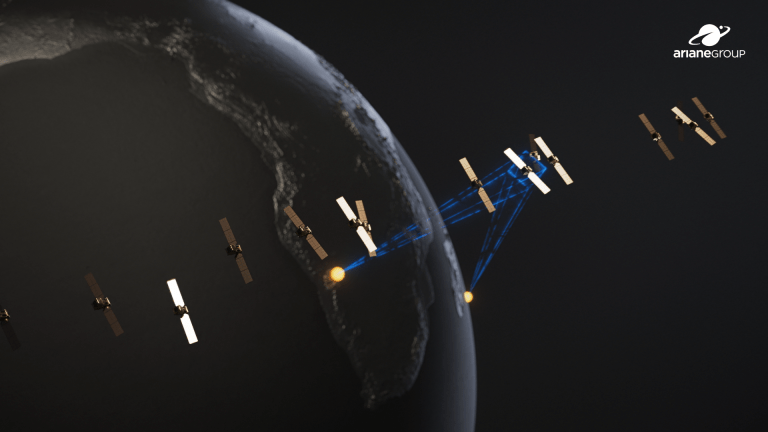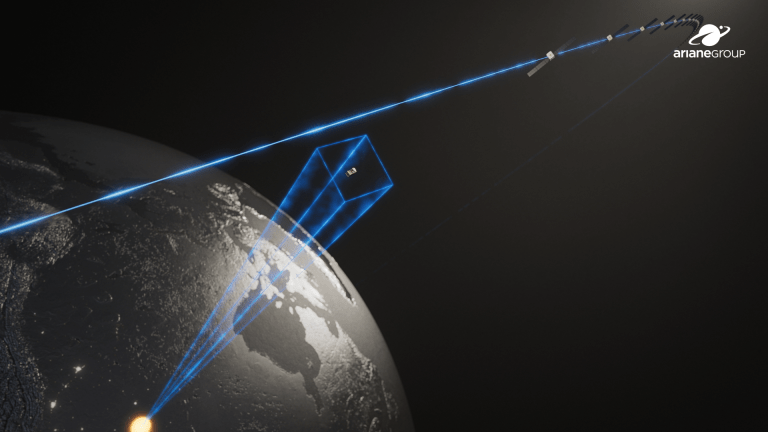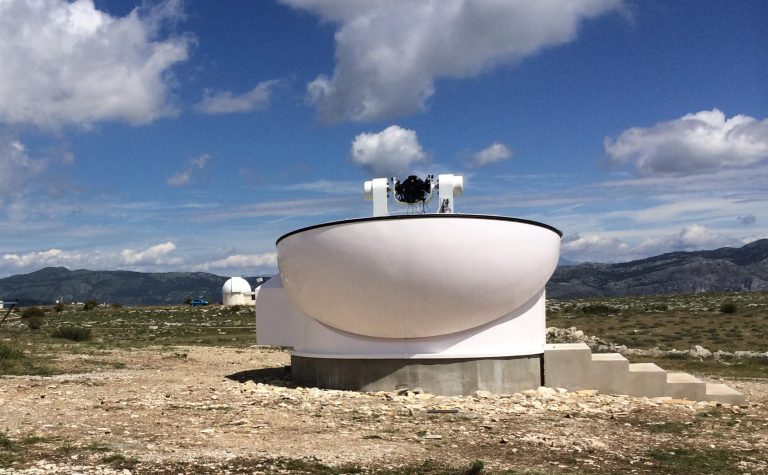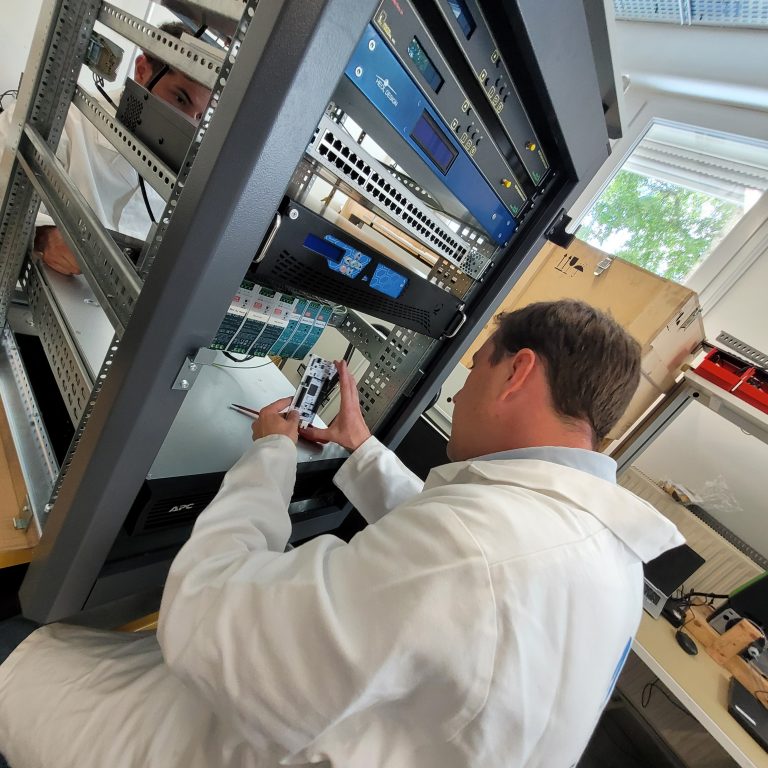Under Helix’s watchful eye
04.11.2024
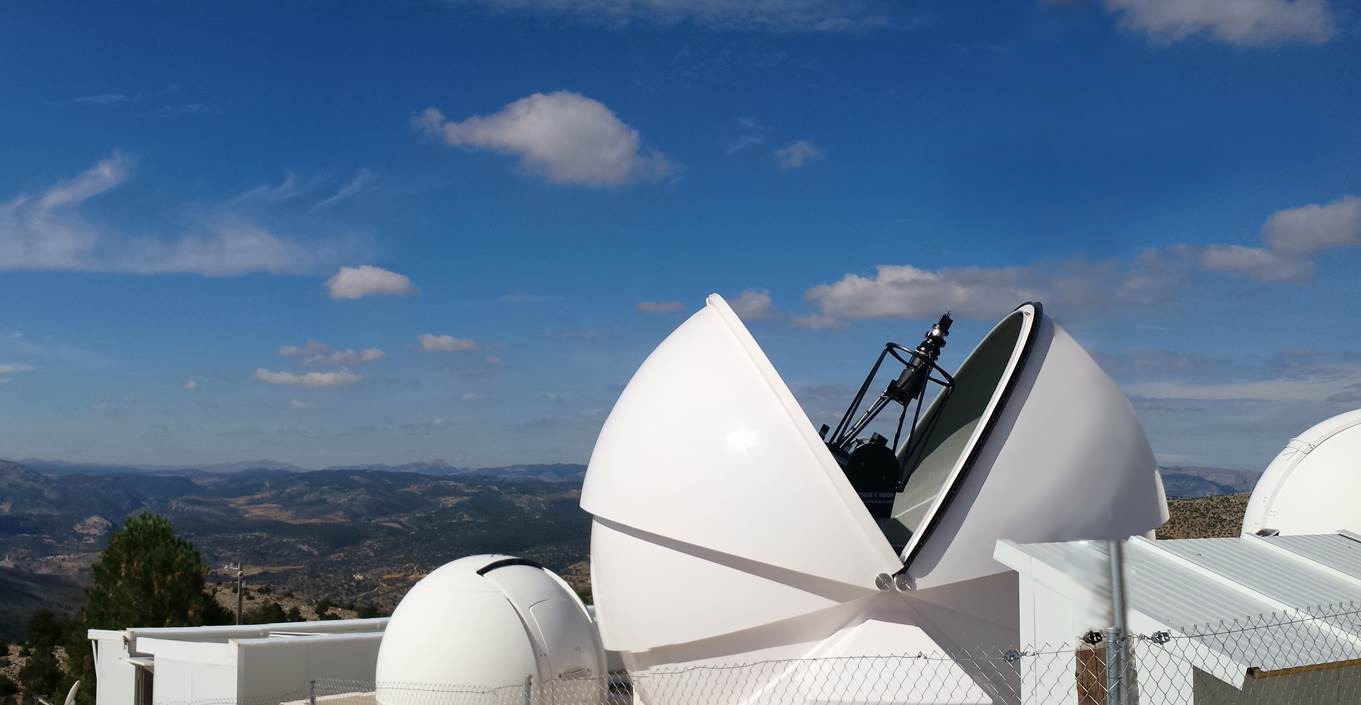
Satellite security is a major issue which will surely become even more critical in the coming years. Helix, Europe’s first private space surveillance network, developed and operated by ArianeGroup, is there to meet the challenge. The Helix system detects and tracks objects in space from low Earth orbit to cislunar orbits. A trailblazer from the outset, Helix never ceases to innovate, to offer an ever better service for protecting customers’ spacecraft against collisions, interference and other threats.
Helix expertise is unrivalled and its capabilities are unique in Europe. A recent example of the system’s prowess was provided just last August, when Helix captured images of the Jupiter-bound JUICE exploration spacecraft as it made its combined lunar–Earth flyby at a distance of more than 500,000 km. Only a month earlier, on 9 July, it had precision-tracked several of Ariane 6’s payloads as they separated from the rocket’s upper stage on its first flight, a first for Ariane.
This stunning technical exploit is a reminder of why Helix came about: the 2008 launch of the initial 20-ton ATV cargo supply craft for the International Space Spation by Ariane 5 truly brought home the need for reliable data to secure space missions.
“Practically no data was available or even collected in Europe,” explains Defence Programme Manager Bruno Esmiller. “In 2008, an internal project was launched. Using amateur astronomy equipment, a demonstrator was developed at ArianeGroup’s Les Mureaux site and the first observations soon followed.” Helix was the pioneer of space surveillance in Europe, with a private network of telescopes dotted around the globe. It has proved to be an indispensable asset, as the number of satellites in orbit has grown massively in recent years. Risks of collision and interference, and also hostile acts of jamming and espionage, have become a major concern for both civilian and military players.
Video
The growing challenge of space debris
Space surveillance networks track around 35,000 objects, but of these only 9,100 are active satellites. The other 26,000 are space junk – debris. And in space, a piece of debris measuring just 10 cm can have an impact equivalent to 240 kg of TNT!
Space is becoming a new strategic frontier where the security of Earth’s orbits, the increasingly packed highways circling our planet, is more crucial than ever. Hélène Blanchard, head of ArianeGroup’s Security in Space programme, has no doubt that “our Helix network is the first key step in meeting the challenge of space debris. In view of current and future uses of space, we must be able to identify, catalogue, map and analyse debris in all orbits, so that we will be able take decisions to secure space if necessary.”
Cutting-edge technologies for ultra-precise surveillance
Helix detects and tracks objects in different orbits, from low Earth (LEO) up to geostationary (GEO) and out to cislunar orbits. This network of optical stations is based on telescopes equipped with tracking systems and high-precision cameras, which detect satellites using the reflection of sunlight. The system has a scalable software architecture to continuously adapt the service to the needs of both civil and military customers.
The teams plan, collect, analyse and deliver data from a catalogue of thousands of space objects every day. But Helix is always forward-looking and evolving. By 2025, the network will expand to 35 stations for even greater coverage. In parallel, new technological advances include the integration of infrared sensors for continuous surveillance, even in broad daylight, and the use of laser telemetry to locate satellites to within a metre.
Strategic dual use
Helix offers a unique dual perspective. For civil operators, it protects vital space infrastructure, such as telecommunications and navigation satellites, by reducing the risk of collision. For the military, Helix plays a strategic role in defending national interests in space. During Europe’s biggest military space exercise, AsterX 2024, Helix demonstrated its ability to provide critical data on thousands of space objects, helping the armed forces to manage in-orbit threats, including espionage, cyber-attacks and hostile manoeuvres. Experts in the field are full of praise: “Helix solutions are a real plus for our autonomous assessment and decision-making. Helix is a trusted partner,” says a representative of the French Space Command (CDE).
Internationally, Helix adapts to all situations and cultures. Further proving the added value of Helix’s bespoke service, a space surveillance expert with an ArianeGroup customer highlights its agility and innovation: “The Helix teams are incredibly flexible, adapting in real time to new requests and urgent situations. This is vital in our sector.”
Space surveillance, combined with a network like Helix, is vital in contributing to a sustainable space for managing launches, space pollution control and space mobility.
